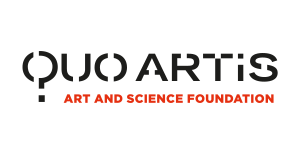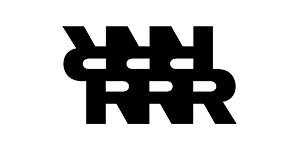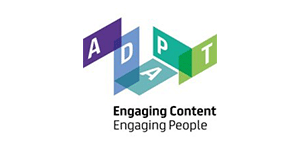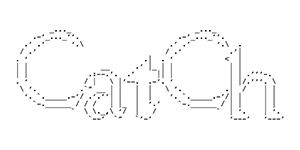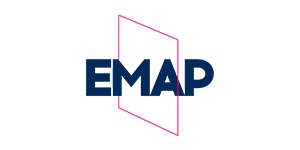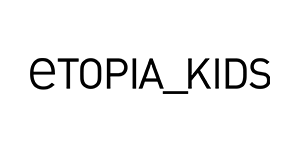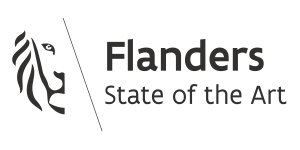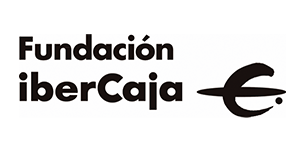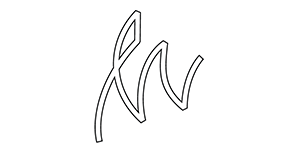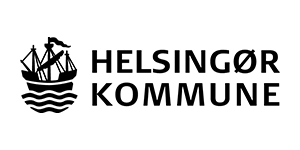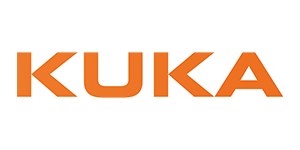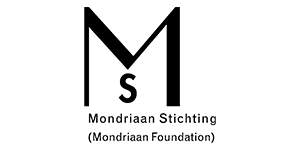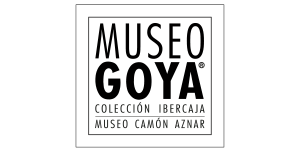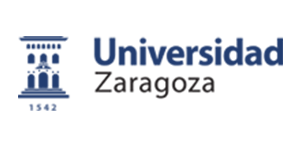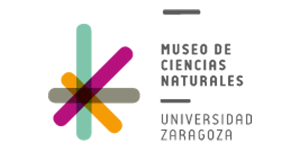Network
The European ARTificial Intelligence Lab emerged from the European Digital Art and Science Network, a creative collaboration between scientific institutions, Ars Electronica and cultural partners throughout Europe that unites science and digital art. The European ARTificial Intelligence Lab takes up this theme and addresses the visions, expectations and fears that we associate with artificial intelligence.
Scientific Partner Institutions
 Founded in 1984, the SETI Institute is a non-profit, multi-disciplinary research and education organization located in Mountain View, California. The Institute leads humanity’s exploration of the nature and origins of life in the Universe, and the quest to find intelligent life beyond Earth. Our research encompasses the physical and biological sciences and leverages expertise in data analytics, machine learning and advanced signal detection technologies. The SETI Institute is a distinguished research partner for industry, academia and government agencies, including NASA and NSF. The SETI Artist-in-Residence (AIR) program facilitates an exchange of ideas between artists and scientists so that these disciplines may inspire each other to catalyze new modes of understanding. SETI AIR artists bring fresh eyes and bright minds to difficult concepts, becoming creative ambassadors for the SETI Institute
Founded in 1984, the SETI Institute is a non-profit, multi-disciplinary research and education organization located in Mountain View, California. The Institute leads humanity’s exploration of the nature and origins of life in the Universe, and the quest to find intelligent life beyond Earth. Our research encompasses the physical and biological sciences and leverages expertise in data analytics, machine learning and advanced signal detection technologies. The SETI Institute is a distinguished research partner for industry, academia and government agencies, including NASA and NSF. The SETI Artist-in-Residence (AIR) program facilitates an exchange of ideas between artists and scientists so that these disciplines may inspire each other to catalyze new modes of understanding. SETI AIR artists bring fresh eyes and bright minds to difficult concepts, becoming creative ambassadors for the SETI Institute
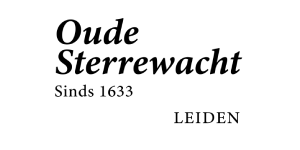 The Leiden Observatory is housed on the Leiden BioScience Park near the city center of Leiden. Around 103 dedicated medical life sciences companies and institutions. The largest number of bioscience start-ups in the Netherlands. Several multinationals and internationally acclaimed research institutes. The Leiden Observatory is divided over two buildings: the Van Oort building and the Huygens building. The institute also maintains the historical observatory in the center of the city Leiden. The old observatory has a visitor center that hosts several exhibitions related to astronomy and educational programmes. Moreover, the historical building has multiple telescopes, both historical and modern.
The Leiden Observatory is housed on the Leiden BioScience Park near the city center of Leiden. Around 103 dedicated medical life sciences companies and institutions. The largest number of bioscience start-ups in the Netherlands. Several multinationals and internationally acclaimed research institutes. The Leiden Observatory is divided over two buildings: the Van Oort building and the Huygens building. The institute also maintains the historical observatory in the center of the city Leiden. The old observatory has a visitor center that hosts several exhibitions related to astronomy and educational programmes. Moreover, the historical building has multiple telescopes, both historical and modern.
Leiden Observatory is the astronomical institute of the Faculty of Science of Leiden University. Established in 1633, it is the oldest university observatory in operation today, with a very rich tradition. Leiden Observatory carries out world class research in the formation of structures in the universe and the origin and evolution of galaxies, the detection and characterization of exoplanets, and the formation of stars and planetary systems. The institute consists of about 35 faculty and adjunct faculty, 50 postdoctoral researchers, 50 MSc and 80 PhD students, and 30 support staff. They offer an excellent educational programme at the Bachelor’s and Master’s levels and a renowned PhD programme. Within the Faculty of Science, the institute closely collaborates with the Leiden Institute of Physics, the Mathematical Institute and the Leiden Institute of Advanced Computer Science.
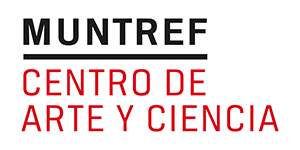 Muntref Centro de Arte y Ciencia (Argentinia): The Museum of the Universidad Nacional de Tres de Febrero Art and Science Center was established in 2010 in Tecnopolis Science and Technology park in Buenos Aires City. The Muntref Centro de Arte y Ciencia is a nodal space for Artists and Scientists interactions by means of transdisciplinary projects at the very same place. It promotes person to person collaborations looking for relevant common questions for Artists and Scientists.Since 2010, many projects have been stablished with different kind of organizations of people and technical resources.
Muntref Centro de Arte y Ciencia (Argentinia): The Museum of the Universidad Nacional de Tres de Febrero Art and Science Center was established in 2010 in Tecnopolis Science and Technology park in Buenos Aires City. The Muntref Centro de Arte y Ciencia is a nodal space for Artists and Scientists interactions by means of transdisciplinary projects at the very same place. It promotes person to person collaborations looking for relevant common questions for Artists and Scientists.Since 2010, many projects have been stablished with different kind of organizations of people and technical resources.
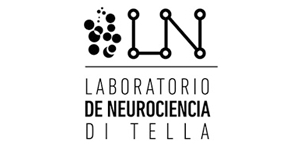 Muntref Centro de Arte y Ciencia main partner is Laboratorio de Neurociencia de la Universidad Torquato Ditella for Artificial Intelligence and Neuroscience projects. The network also established collaborations with other researchers and institutions in Argentina and abroad. Some of them are: Universidad de Buenos Aires (Argentina), Universidad Nacional de Quilmes (Argentina), Oxford University (UK), IBM Thomas J. Watson Research Center (USA), Turku University (Finlandia), Universidad de Valencia (Spain), University College of Volda (Norway), Universidad Católica Argentina (UCA), University of Vaasa (Finland), Universidad de los Andes (Colombia), elBulli Lab – Ferrà¡n Adria, Université de Perpignan (France).
Muntref Centro de Arte y Ciencia main partner is Laboratorio de Neurociencia de la Universidad Torquato Ditella for Artificial Intelligence and Neuroscience projects. The network also established collaborations with other researchers and institutions in Argentina and abroad. Some of them are: Universidad de Buenos Aires (Argentina), Universidad Nacional de Quilmes (Argentina), Oxford University (UK), IBM Thomas J. Watson Research Center (USA), Turku University (Finlandia), Universidad de Valencia (Spain), University College of Volda (Norway), Universidad Católica Argentina (UCA), University of Vaasa (Finland), Universidad de los Andes (Colombia), elBulli Lab – Ferrà¡n Adria, Université de Perpignan (France).
arteyciencia.untref.edu.ar
www.utdt.edu
 Edinburgh Futures Institute and Bayes Centre (Scotland): Edinburgh is one of the world’s premier festival cities and a centre for world-leading research in artificial intelligence and machine learning. These two strengths combine to make Edinburgh a fertile ground for a holistic exploration of AI. A new programme, Experiential AI at the Edinburgh Futures Institute and Bayes Centre in Edinburgh, explores how art and creativity can make the operation of an AI system tangible, legible, and accessible to the people whose data are captured and acted upon. It will connect AI research to Edinburgh’s Festivals, and thereby to the civic and cultural life of Edinburgh. Drew Hemment has moved to Edinburgh to help establish the Edinburgh Futures Institute and develop research spanning data, futures and festivals. Artists who use machine learning algorithms or data as their material are invited to apply for an AILab residency in Edinburgh and Linz, call launched summer 2019.
Edinburgh Futures Institute and Bayes Centre (Scotland): Edinburgh is one of the world’s premier festival cities and a centre for world-leading research in artificial intelligence and machine learning. These two strengths combine to make Edinburgh a fertile ground for a holistic exploration of AI. A new programme, Experiential AI at the Edinburgh Futures Institute and Bayes Centre in Edinburgh, explores how art and creativity can make the operation of an AI system tangible, legible, and accessible to the people whose data are captured and acted upon. It will connect AI research to Edinburgh’s Festivals, and thereby to the civic and cultural life of Edinburgh. Drew Hemment has moved to Edinburgh to help establish the Edinburgh Futures Institute and develop research spanning data, futures and festivals. Artists who use machine learning algorithms or data as their material are invited to apply for an AILab residency in Edinburgh and Linz, call launched summer 2019.
efi.ed.ac.uk
Consortium
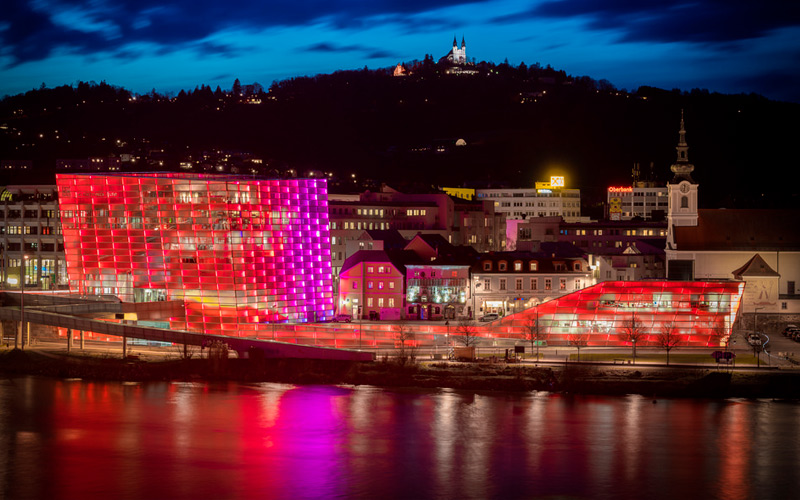
Credit: Ars Electronica / Robert Bauernhansl
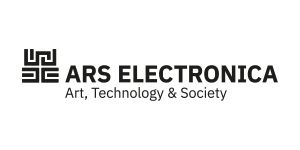 Ars Electronica (Austria): Since 1979, Ars Electronica (AT) has sought out interlinkages and congruities, causes and effects between art, technology and society. The ideas circulating here are innovative, radical, eccentric in the best sense of that term. They influence our everyday life—our lifestyle, our way of life, every single day. The Festival as proving ground, the Prix as competition honoring excellence, the Center as a year-round setting for presentation & interaction, and the Futurelab as in-house R&D facility extend their feelers throughout the realms of science and research, art and technology. Ars Electronica’s four divisions inspire one another and put futuristic visions to the test in a unique, creative feedback loop. It’s an integrated organism continuously reinventing itself.
Ars Electronica (Austria): Since 1979, Ars Electronica (AT) has sought out interlinkages and congruities, causes and effects between art, technology and society. The ideas circulating here are innovative, radical, eccentric in the best sense of that term. They influence our everyday life—our lifestyle, our way of life, every single day. The Festival as proving ground, the Prix as competition honoring excellence, the Center as a year-round setting for presentation & interaction, and the Futurelab as in-house R&D facility extend their feelers throughout the realms of science and research, art and technology. Ars Electronica’s four divisions inspire one another and put futuristic visions to the test in a unique, creative feedback loop. It’s an integrated organism continuously reinventing itself.
ars.electronica.art
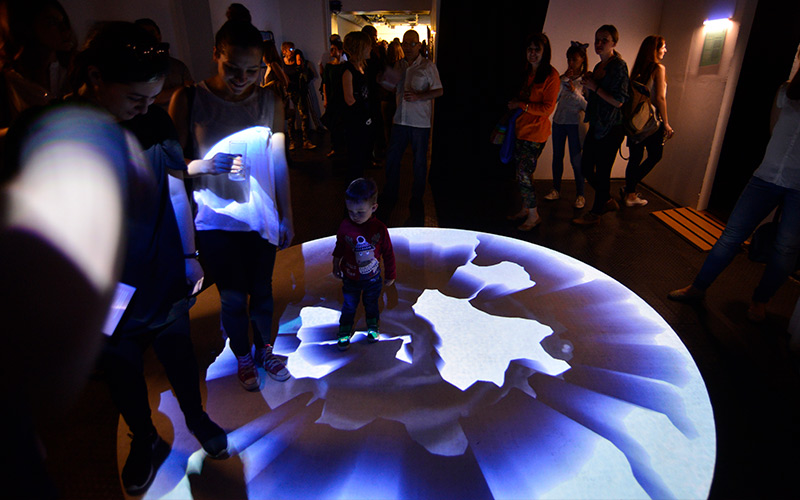
Credit: Milovan Milenkovic
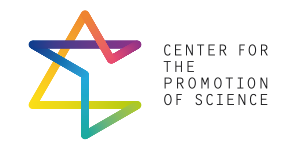 Center for Promotion of Science (Serbia): The Center for the Promotion of Science (CPN) in Serbia is a public institution established in 2010 with the task to promote science and technology. The Center, according to its mandate, cooperates with research and educational institutions (universities, research centers and schools) in Serbia and worldwide. The CPN’s mission is to bridge the gap between science and society by bringing together researchers, educators, artists, policy makers, civil society organizations, business and industry and the general public in the process of research and innovation. The ultimate aim is to influence and adapt the general research agendas to reflect the needs of the society and to address societal challenges engaging all actors involved in the process. In following years, the focus will be put on climate changes and artificial intelligence as two most relevant scientific and societal issues and topics nowadays. The Center organizes a large number of exhibitions, lectures, panel discussions and other events on different STE(A)M topics and subjects (mathematics, physics, robotics, archeology, psychology, genetics, biology, architecture etc.). CPN was involved in 31 European collaborations since 2012, while it’s currently part of seven H2020, one Creative Europe and four Erasmus+ projects, and two additional COST actions.
Center for Promotion of Science (Serbia): The Center for the Promotion of Science (CPN) in Serbia is a public institution established in 2010 with the task to promote science and technology. The Center, according to its mandate, cooperates with research and educational institutions (universities, research centers and schools) in Serbia and worldwide. The CPN’s mission is to bridge the gap between science and society by bringing together researchers, educators, artists, policy makers, civil society organizations, business and industry and the general public in the process of research and innovation. The ultimate aim is to influence and adapt the general research agendas to reflect the needs of the society and to address societal challenges engaging all actors involved in the process. In following years, the focus will be put on climate changes and artificial intelligence as two most relevant scientific and societal issues and topics nowadays. The Center organizes a large number of exhibitions, lectures, panel discussions and other events on different STE(A)M topics and subjects (mathematics, physics, robotics, archeology, psychology, genetics, biology, architecture etc.). CPN was involved in 31 European collaborations since 2012, while it’s currently part of seven H2020, one Creative Europe and four Erasmus+ projects, and two additional COST actions.
cpn.rs/en
eu.cpn.rs/en
cpn.rs/artandscience

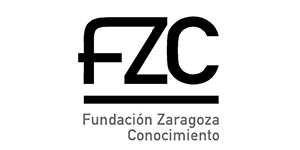 Zaragoza City of Knowledge Foundation (Spain): Zaragoza City of Knowledge Foundation is a private non-profit foundation born in 2004. Its institution goals include the dissemination, at all levels in the city of Zaragoza, of the progress made by the Knowledge Society to construct a more participative, equalitarian, inclusive, and innovative society; open to the new development expectations offered by the intersection of art, science and technology. The Foundation headquarters have been located, since 2013, in Etopia Centre for Art and Technology, a municipal space of the city of Zaragoza, intended for learning, sharing and enjoying the capacities of creative technologies, citizen science, digital culture, and as a centre for multi-disciplinary production. The Foundation places special emphasis on scientific dissemination among younger people, on the fight to overcome the digital gaps for citizens with a greater risk of social exclusion, and on favouring the incorporation of women into the scientific-technological field.
Zaragoza City of Knowledge Foundation (Spain): Zaragoza City of Knowledge Foundation is a private non-profit foundation born in 2004. Its institution goals include the dissemination, at all levels in the city of Zaragoza, of the progress made by the Knowledge Society to construct a more participative, equalitarian, inclusive, and innovative society; open to the new development expectations offered by the intersection of art, science and technology. The Foundation headquarters have been located, since 2013, in Etopia Centre for Art and Technology, a municipal space of the city of Zaragoza, intended for learning, sharing and enjoying the capacities of creative technologies, citizen science, digital culture, and as a centre for multi-disciplinary production. The Foundation places special emphasis on scientific dissemination among younger people, on the fight to overcome the digital gaps for citizens with a greater risk of social exclusion, and on favouring the incorporation of women into the scientific-technological field.
www.fundacionzcc.org

Credit: LABoral/Roberto Tolí
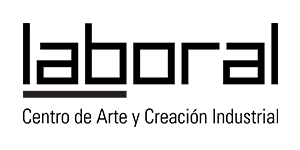 Laboral (Spain): LABoral is a multidisciplinary institution which produces, disseminates and fosters access to new forms of culture rooted in the creative use of information and communication technologies (ICT). LABoral has been working in crossovers between arts, science and technology since its creation in 2007. The hybrid nature of the institution is seen through its focus on production, a practice that involves an intense knowledge exchange amongst professionals from different disciplines with a common objective. In this context, the collaboration with all these professionals has always been a new challenge, due to the differences and similarities between practices. Thus, this experience is to be shared, agreed and formalized, with similar hybrid institutions through the production of various research projects and related activities.
Laboral (Spain): LABoral is a multidisciplinary institution which produces, disseminates and fosters access to new forms of culture rooted in the creative use of information and communication technologies (ICT). LABoral has been working in crossovers between arts, science and technology since its creation in 2007. The hybrid nature of the institution is seen through its focus on production, a practice that involves an intense knowledge exchange amongst professionals from different disciplines with a common objective. In this context, the collaboration with all these professionals has always been a new challenge, due to the differences and similarities between practices. Thus, this experience is to be shared, agreed and formalized, with similar hybrid institutions through the production of various research projects and related activities.
www.laboralcentrodearte.org

Credit: Miha Fras and Kapelica Gallery
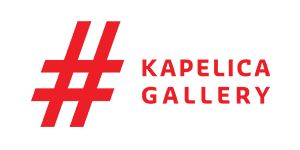 Kersnikova Institute/Kapelica Gallery (Slovenia): Kersnikova Institute is a non-profit and non-governmental cultural organization that serves as an institutional frame for three progressive venues: Kapelica Gallery, a world renown space for contemporary investigative arts, the hacker space Rampa, where relations between society, science, technology and art are being reconsidered, and the inspirational laboratory BioTehna, which focuses on the artistic research of living systems.
Kersnikova Institute/Kapelica Gallery (Slovenia): Kersnikova Institute is a non-profit and non-governmental cultural organization that serves as an institutional frame for three progressive venues: Kapelica Gallery, a world renown space for contemporary investigative arts, the hacker space Rampa, where relations between society, science, technology and art are being reconsidered, and the inspirational laboratory BioTehna, which focuses on the artistic research of living systems. 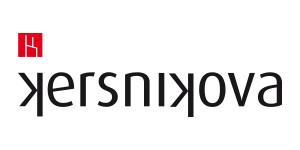 The programme of Kersnikova has been developed as a response to the profound changes in society, thus it is constructed from investigative artistic and learning activities that reflect the multitudes of contemporaneity and announce the possible future scenarios. As a production platform, which encourages, enables and presents artistic production, the Kersnikova Institute is a space for transdisciplinary interactions, in which the authors and their teams can develop the most demanding and bold projects.
The programme of Kersnikova has been developed as a response to the profound changes in society, thus it is constructed from investigative artistic and learning activities that reflect the multitudes of contemporaneity and announce the possible future scenarios. As a production platform, which encourages, enables and presents artistic production, the Kersnikova Institute is a space for transdisciplinary interactions, in which the authors and their teams can develop the most demanding and bold projects.
www.kersnikova.org
www.kapelica.org
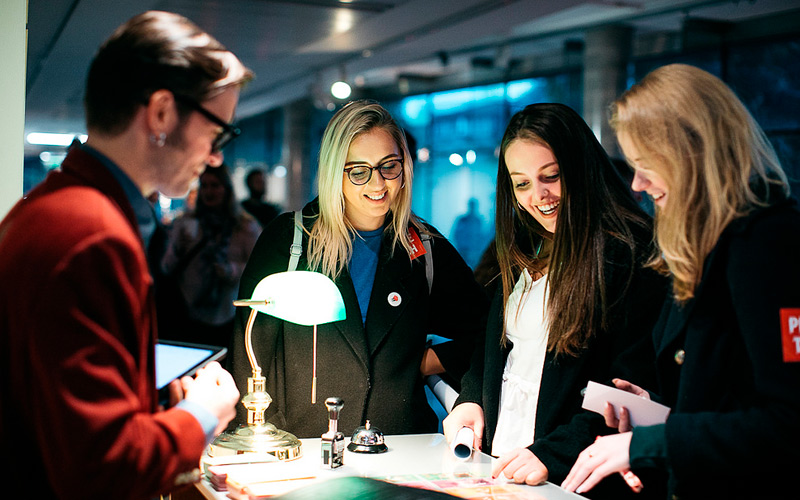
Credit: Science Gallery Dublin
 Science Gallery Dublin (Ireland): Science Gallery is an organisation dedicated to igniting creativity and discovery where science and art collide. This cutting-edge public engagement platform uses a transdisciplinary approach that unites the Arts with STEM (Science,Technology, Engineering and Mathematics), using these as a lens to examine the burning issues and wicked problems facing society today. Creative collisions happen through 3-4 free exhibitions per year, with complementary events, performances, workshops and educational programmes. Since opening in 2008, over 2.5 million people have engaged with over 40 exhibitions, thousands of events and workshops co-created with more than 2,000 collaborators from diverse disciplines including the arts, science, design, humanities, health, engineering and social science. Recent exhibitions have included HUMANS NEED NOT APPLY which asked the question “In an automated world, will it be time to put humans out to pasture?”; IN CASE OF EMERGENCY which asked “How will it all end, and why do we love to wonder?” and INTIMACY, exploring the meaning of intimacy in today’s world, and asking whether technology is disrupting traditional notions of togetherness, opening new avenues for connection, or killing off closeness altogether?
Science Gallery Dublin (Ireland): Science Gallery is an organisation dedicated to igniting creativity and discovery where science and art collide. This cutting-edge public engagement platform uses a transdisciplinary approach that unites the Arts with STEM (Science,Technology, Engineering and Mathematics), using these as a lens to examine the burning issues and wicked problems facing society today. Creative collisions happen through 3-4 free exhibitions per year, with complementary events, performances, workshops and educational programmes. Since opening in 2008, over 2.5 million people have engaged with over 40 exhibitions, thousands of events and workshops co-created with more than 2,000 collaborators from diverse disciplines including the arts, science, design, humanities, health, engineering and social science. Recent exhibitions have included HUMANS NEED NOT APPLY which asked the question “In an automated world, will it be time to put humans out to pasture?”; IN CASE OF EMERGENCY which asked “How will it all end, and why do we love to wonder?” and INTIMACY, exploring the meaning of intimacy in today’s world, and asking whether technology is disrupting traditional notions of togetherness, opening new avenues for connection, or killing off closeness altogether?
dublin.sciencegallery.com

Credit: Andreas Simopoulos, Courtesy of Onassis Cultural Center Athens
 Onassis Cultural Center (Greece): The Onassis Cultural Centre-Athens was inaugurated in December 2010, as a new cultural site accessible to all. Its mission is the promotion of modern cultural expression, the support of new Greek artists, the cultivation of international collaborations, the education and lifelong learning, as well as the co-existence and interaction of sciences, innovation and arts.
Onassis Cultural Center (Greece): The Onassis Cultural Centre-Athens was inaugurated in December 2010, as a new cultural site accessible to all. Its mission is the promotion of modern cultural expression, the support of new Greek artists, the cultivation of international collaborations, the education and lifelong learning, as well as the co-existence and interaction of sciences, innovation and arts.
www.onassis.org
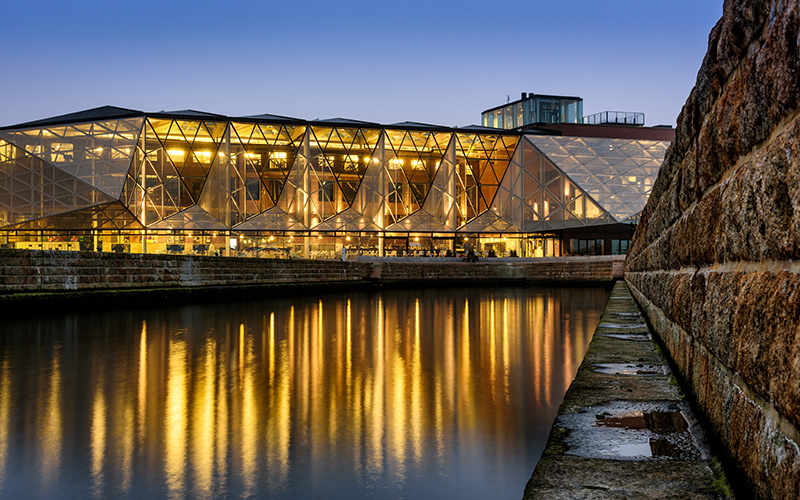
Credit: Thomas Gundel
 The Culture Yard (Denmark): The Culture Yard is a multi-cultural centre situated in Elsinore in one of the Nordic epic centres of culture with old shipyard halls, award winning modern architecture and Hamlets old castle all in the mix. The Culture Yard unfolds its culture program on our stages, festivals, conference- and event facilities, exhibition rooms, presenting more than 1000 events during the year including CLICK Festival for contemporary art embracing and exploring the field between art, science and technology.
The Culture Yard (Denmark): The Culture Yard is a multi-cultural centre situated in Elsinore in one of the Nordic epic centres of culture with old shipyard halls, award winning modern architecture and Hamlets old castle all in the mix. The Culture Yard unfolds its culture program on our stages, festivals, conference- and event facilities, exhibition rooms, presenting more than 1000 events during the year including CLICK Festival for contemporary art embracing and exploring the field between art, science and technology.
www.kuto.dk
www.clickfestival.dk
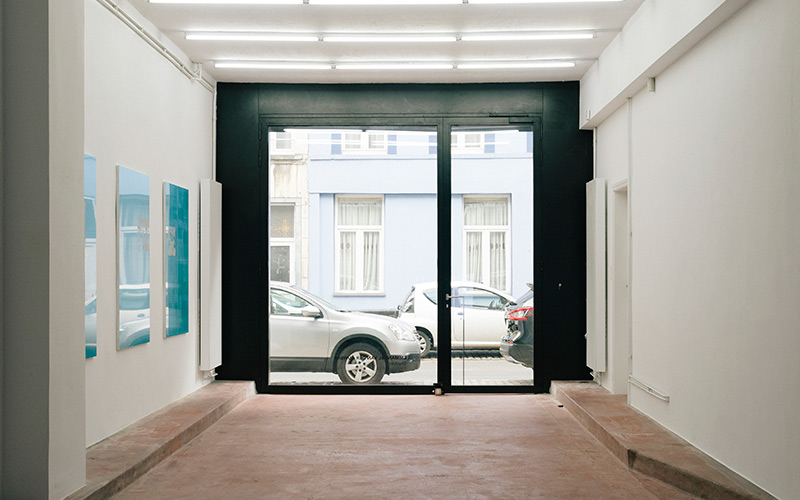
Credit: Julie Scheurweghs
 GLUON (Belgium): Gluon is a Brussels-based platform that maximizes collaborations between artists, researchers, industrialists, young people and active citizens. It connects artists with researchers in universities, research institutions and companies. At the same time, it supports residencies of scientists in the studios of artists. Gluon also develops a program of lectures and exhibitions, and organizes workshops that stimulate education in the field of science, technology and the arts.
GLUON (Belgium): Gluon is a Brussels-based platform that maximizes collaborations between artists, researchers, industrialists, young people and active citizens. It connects artists with researchers in universities, research institutions and companies. At the same time, it supports residencies of scientists in the studios of artists. Gluon also develops a program of lectures and exhibitions, and organizes workshops that stimulate education in the field of science, technology and the arts.
gluon.be

Credit: Pierre Jayet
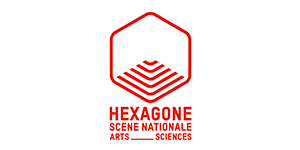 Hexagone Scène Nationale Arts Sciences (France): Meylan (National Theater) is located in the area of Grenoble, France, and welcomes in its 560 seats theatre about 30 shows (theatre, dance, circus, music,…) and 30 000 spectators a year. In addition to its traditional missions as a «Scène Nationale» (artistic production & presentation, cultural development), Hexagone has also developed since 2002 a research activity.
Hexagone Scène Nationale Arts Sciences (France): Meylan (National Theater) is located in the area of Grenoble, France, and welcomes in its 560 seats theatre about 30 shows (theatre, dance, circus, music,…) and 30 000 spectators a year. In addition to its traditional missions as a «Scène Nationale» (artistic production & presentation, cultural development), Hexagone has also developed since 2002 a research activity.  Hexagone thus has created in 2007 the Atelier Arts Sciences, a common research and creativity platform shared with the French research centre CEA (The CEA Grenoble dedicates the main part of its researches to the development of the micro- and nanotechnologies). It has promoted creativity through encounters between artists and scientists at intersections between art, culture, technology and sciences. It organises residencies that made it possible for new ideas and disruptive innovations to emerge and new technologies to get integrated into performing art shows and enable everyone to build its own vision induced by advances in scientific knowledge.
Hexagone thus has created in 2007 the Atelier Arts Sciences, a common research and creativity platform shared with the French research centre CEA (The CEA Grenoble dedicates the main part of its researches to the development of the micro- and nanotechnologies). It has promoted creativity through encounters between artists and scientists at intersections between art, culture, technology and sciences. It organises residencies that made it possible for new ideas and disruptive innovations to emerge and new technologies to get integrated into performing art shows and enable everyone to build its own vision induced by advances in scientific knowledge.
www.theatre-hexagone.eu
www.atelier-arts-sciences.eu

Credit: SOU Festival
 SOU Festival (Georgia): Stream of unconsciousness festival challenges established contexts, which define the whole cultural process of today. architecture, individual and collective memory, physical experience, definitions, cultural hierarchy and others has created for us a perception of expectations. every single artist, their work and the context we create for contact questions these expectations and makes our quest more exciting. contemporary music and visual arts, acoustic experiments, sound research, new opera, musical theatre, digital and new media art, dance, interaction with traditional music are of main focus to SOU festival. Besides actual cultural happenings we encourage education and information accessibility through workshops and other educational programs.
SOU Festival (Georgia): Stream of unconsciousness festival challenges established contexts, which define the whole cultural process of today. architecture, individual and collective memory, physical experience, definitions, cultural hierarchy and others has created for us a perception of expectations. every single artist, their work and the context we create for contact questions these expectations and makes our quest more exciting. contemporary music and visual arts, acoustic experiments, sound research, new opera, musical theatre, digital and new media art, dance, interaction with traditional music are of main focus to SOU festival. Besides actual cultural happenings we encourage education and information accessibility through workshops and other educational programs.
www.soufestival.com

Credit: Martin Argyroglo
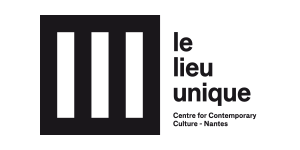 le lieu unique (France): Located in the heart of Nantes from January 1st 2000, the former factory LU has been living a second life at the rate of an atypical and multidisciplinary arts center: le lieu unique. Le lieu unique is a space of artistic exploration and a convivial cultural ferment that mixes genres, cultures and audiences. Its credo: the spirit of discovery in different fields of art (visual arts, theater, dance, circus, music, literature, humanities, architecture, comics, art taste, etc..). With nearly 600 000 visitors (of which, 150 000 spectators for the artistic activities) le lieu unique must be experienced for anyone who wants to put the finger on the pulse of la vie nantaise.
le lieu unique (France): Located in the heart of Nantes from January 1st 2000, the former factory LU has been living a second life at the rate of an atypical and multidisciplinary arts center: le lieu unique. Le lieu unique is a space of artistic exploration and a convivial cultural ferment that mixes genres, cultures and audiences. Its credo: the spirit of discovery in different fields of art (visual arts, theater, dance, circus, music, literature, humanities, architecture, comics, art taste, etc..). With nearly 600 000 visitors (of which, 150 000 spectators for the artistic activities) le lieu unique must be experienced for anyone who wants to put the finger on the pulse of la vie nantaise.
www.lelieuunique.com

Credit: Waag – Outspectre by Frank Kolkman
 Waag (Netherlands): Waag operates at the intersection of science, technology and the arts. Our work focuses on emergent technologies as instruments of social change, and is guided by the values of fairness, openness and inclusivity. Regarding AI, Waag sets out to explore the role and potential of AI in our shared futures, understanding AI systems both as technological and cultural phenomena. Waag’s AI Lab develops along three major research lines: People’s AI, Artificial personality, and Open AI.
Waag (Netherlands): Waag operates at the intersection of science, technology and the arts. Our work focuses on emergent technologies as instruments of social change, and is guided by the values of fairness, openness and inclusivity. Regarding AI, Waag sets out to explore the role and potential of AI in our shared futures, understanding AI systems both as technological and cultural phenomena. Waag’s AI Lab develops along three major research lines: People’s AI, Artificial personality, and Open AI.
www.waag.org
Associated Partners
If you are a representative of an institution, company or a platform working in the realm of art & science & AI and are interested in becoming an associated partner, please get in contact with’ ailab@ars.electronica.art.

